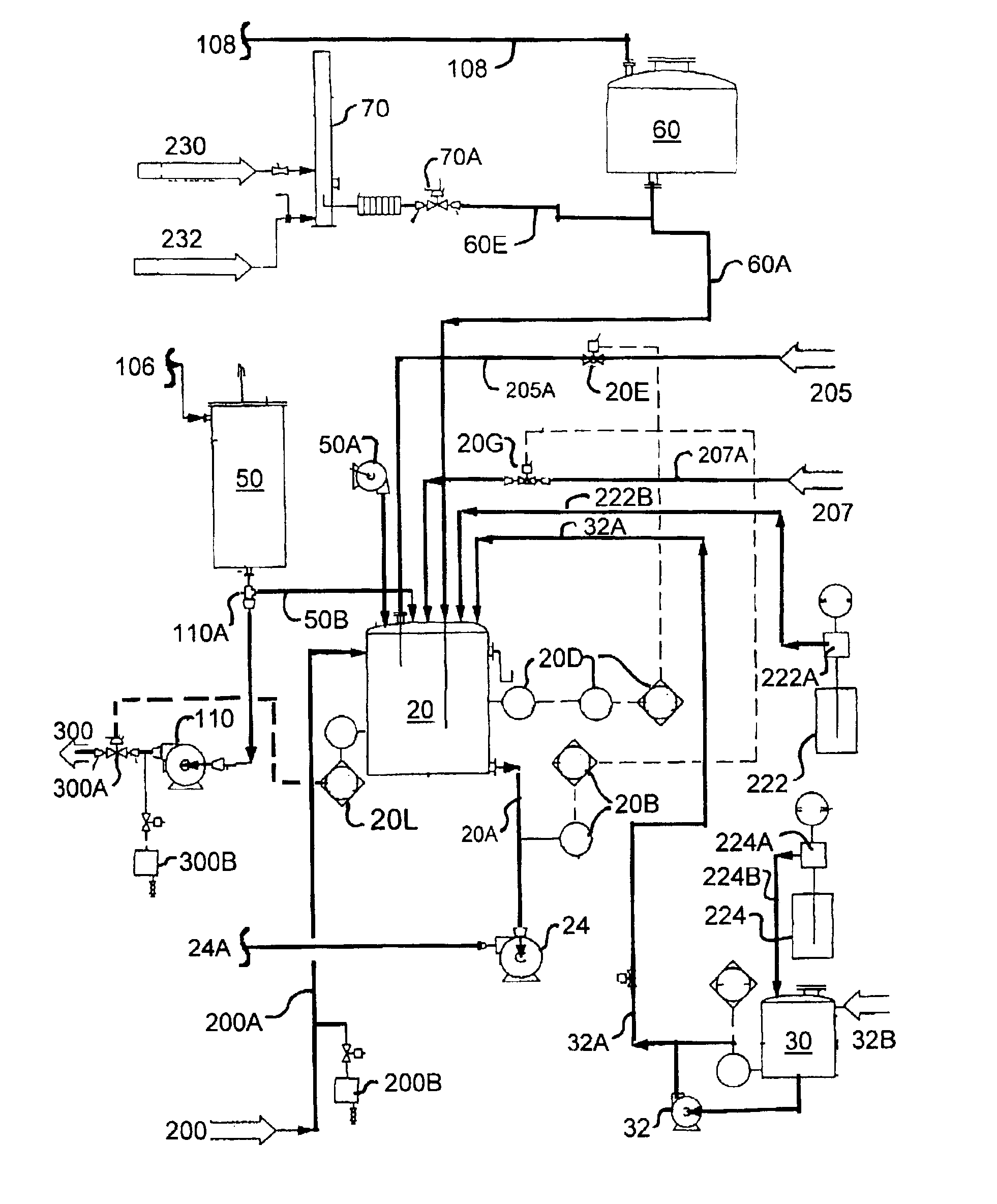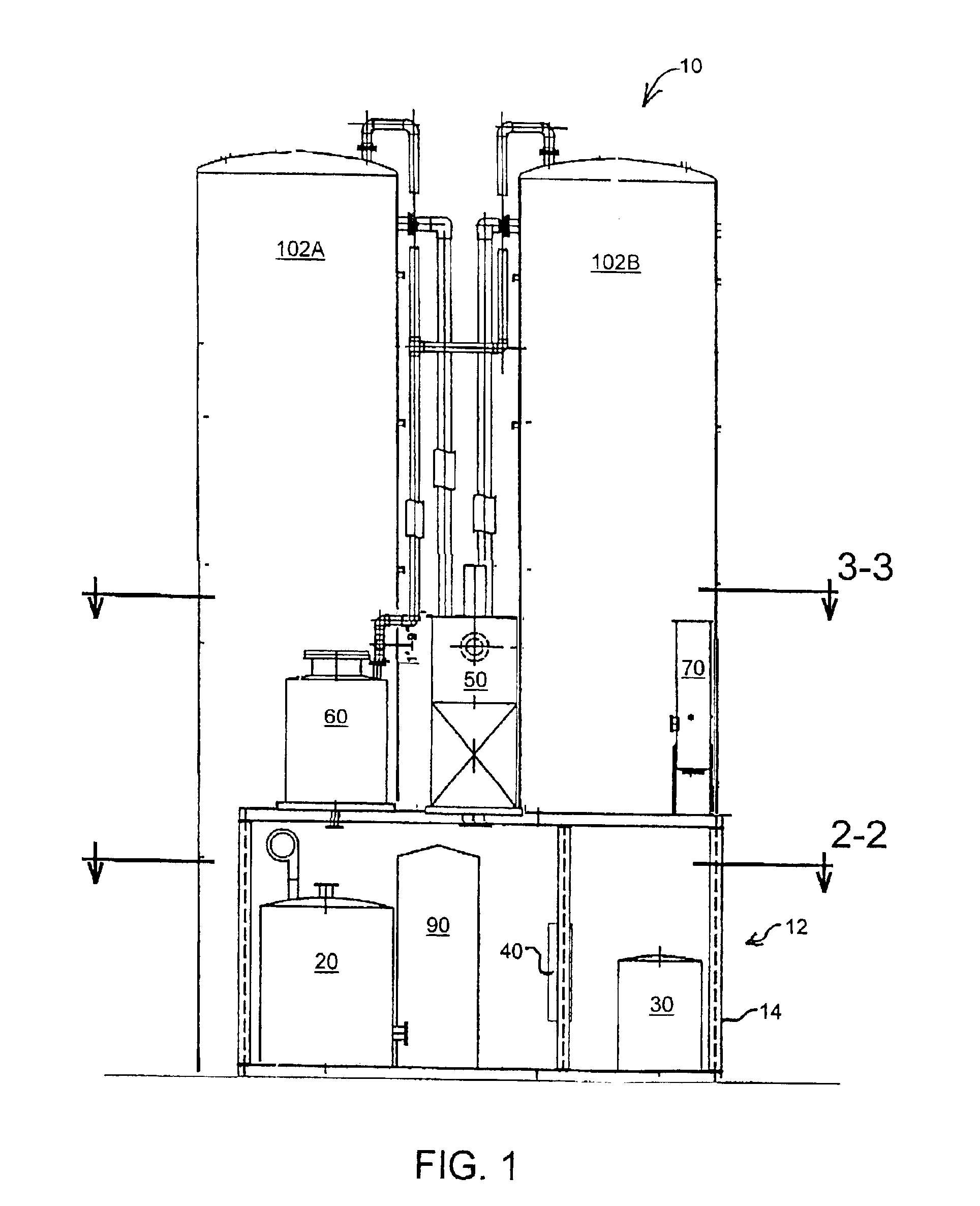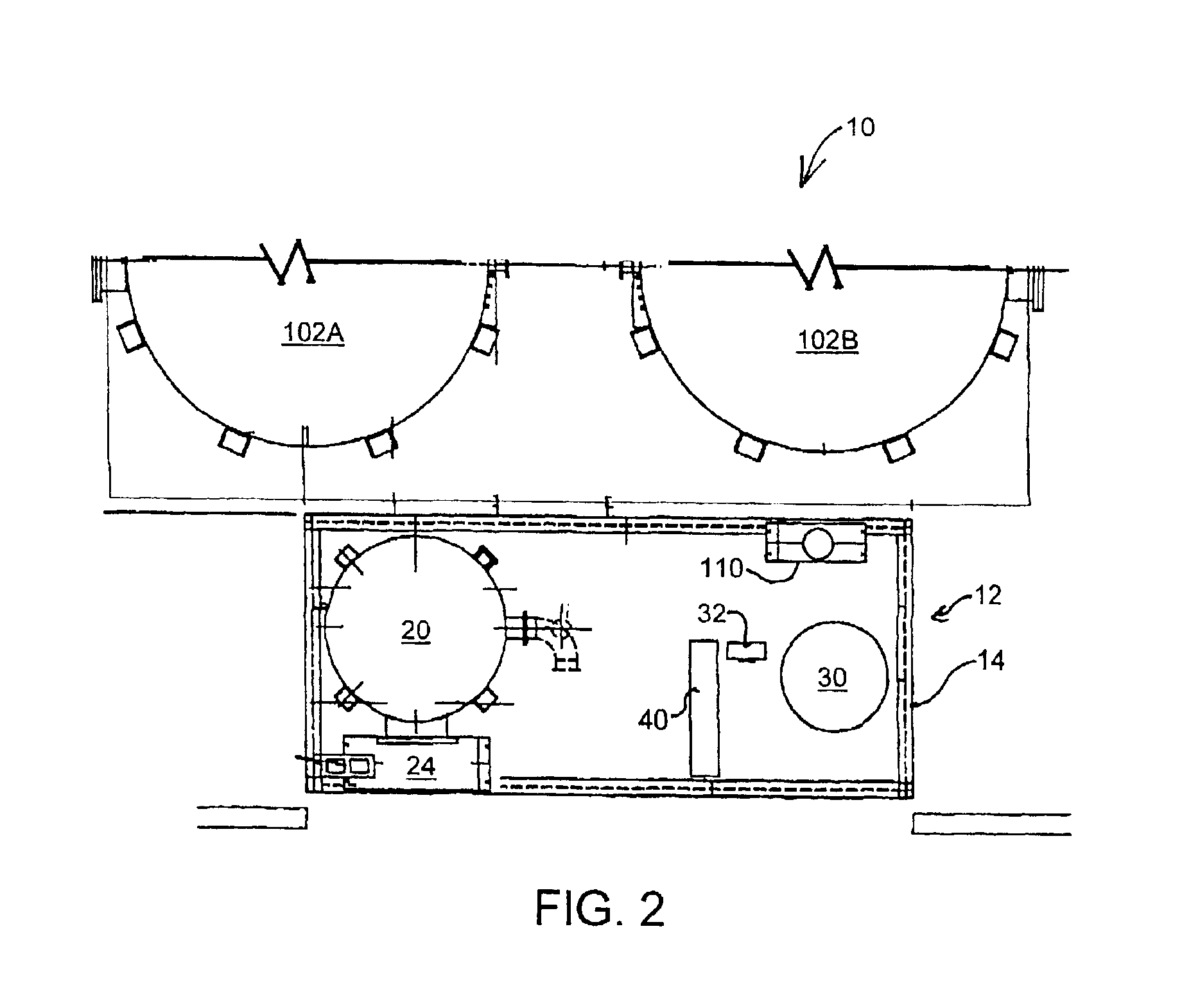Modular waste water treatment system
- Summary
- Abstract
- Description
- Claims
- Application Information
AI Technical Summary
Benefits of technology
Problems solved by technology
Method used
Image
Examples
Embodiment Construction
[0020]Turning now to the drawings, wherein like reference numerals identify identical or corresponding elements, and more particularly to FIG. 1 thereof, a modular waste water treatment system 10 is shown including a bioreactor support module 12 and bioreactors 102A and 102B.
[0021]Bioreactor support module 12 is generally a transportable module. Preferably, bioreactor support module 12 houses all of the control equipment for treatment system 10, systems for adding needed nutrients and chemicals, pumps for re-circulation and product discharge and heat control systems required to maintain appropriate operating temperatures. Bioreactor support module 12 includes a frame 14 to which is mounted a number of items of equipment. Frame 14 is preferably sized to fit on the trailer bed of a large tractor trailer for highway transport and is preferably fabricated from structural steel. The items of equipment mounted on the upper level of frame 14 may be removed temporarily during highway transp...
PUM
| Property | Measurement | Unit |
|---|---|---|
| Temperature | aaaaa | aaaaa |
| Transport properties | aaaaa | aaaaa |
Abstract
Description
Claims
Application Information
 Login to View More
Login to View More - R&D
- Intellectual Property
- Life Sciences
- Materials
- Tech Scout
- Unparalleled Data Quality
- Higher Quality Content
- 60% Fewer Hallucinations
Browse by: Latest US Patents, China's latest patents, Technical Efficacy Thesaurus, Application Domain, Technology Topic, Popular Technical Reports.
© 2025 PatSnap. All rights reserved.Legal|Privacy policy|Modern Slavery Act Transparency Statement|Sitemap|About US| Contact US: help@patsnap.com



